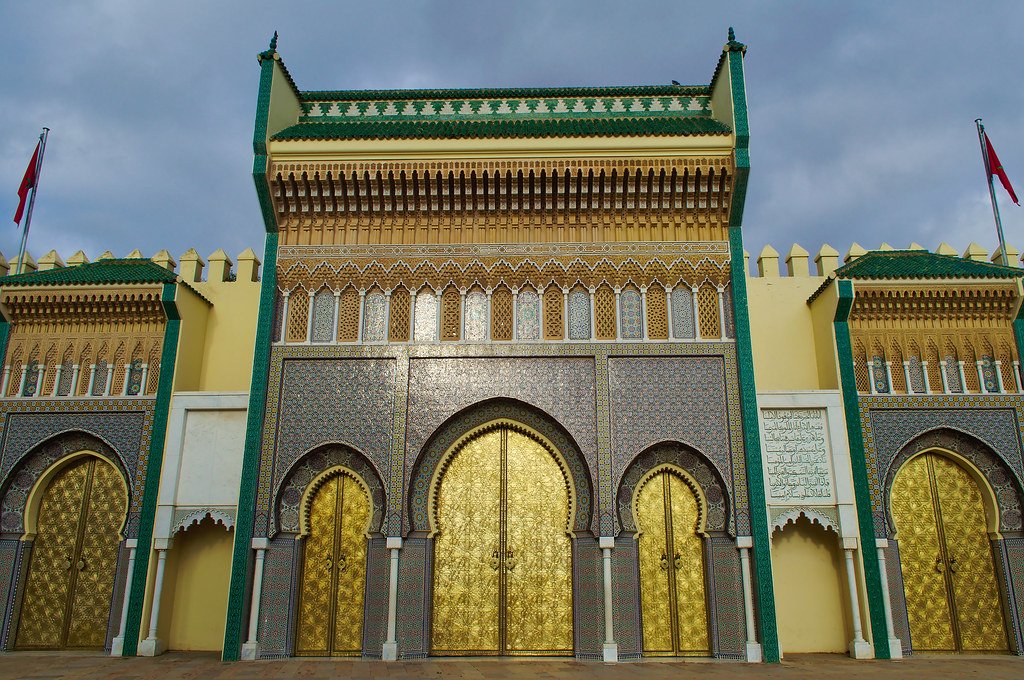Moroccan Royal Palace: A Must-See Attraction for Tourists in Morocco
Discover the Majesty of the Moroccan Royal Palace
Morocco is a country of timeless beauty, where ancient traditions meet modern elegance. Among its most captivating landmarks, the Moroccan Royal Palace stands as a symbol of the nation’s rich history and royal heritage. These magnificent palaces, located in several major cities, serve as official residences of the Moroccan royal family and are among the most awe-inspiring sights in the country.
Although these palaces remain closed to the public, their architectural grandeur, intricate designs, and cultural significance make them essential stops for travelers. From the imposing golden gates of the Royal Palace of Fez to the expansive courtyards of the Royal Palace of Rabat, these royal residences provide a glimpse into Morocco’s monarchy, traditions, and artistry.
This guide will take you through the most famous Moroccan Royal Palaces, what makes them remarkable, and how to experience their beauty up close.
Want priority assistance? Message us on WhatsApp, and we’ll help you right away!
1. The Significance of the Moroccan Royal Palace
The Moroccan Royal Palace, also known as Dar al-Makhzen, is more than a residence; it is a powerful representation of Morocco’s monarchy, serving as a political and cultural landmark. Each palace showcases Moroccan architectural mastery, blending Andalusian, Moorish, and Islamic influences into grand designs featuring detailed zellige tilework, cedar wood carvings, and expansive gardens.
These palaces are located in Rabat, Fez, Marrakech, Meknes, and other imperial cities, with each one playing an essential role in Morocco’s governance. The most significant is the Royal Palace of Rabat, the official residence of King Mohammed VI, where key political meetings and royal ceremonies take place.
2. Where to See the Most Stunning Moroccan Royal Palaces
Royal Palace of Rabat
- The primary residence of the King of Morocco and an important government site.
- Located in Rabat, the capital city, surrounded by lush gardens and high walls.
- The exterior is a blend of Moroccan and Andalusian architectural styles, featuring ornate gates and traditional geometric patterns.
- Best Viewpoint: The gates on Avenue Mohammed V, where royal guards in ceremonial attire stand watch.
Royal Palace of Fez (Dar al-Makhzen Fez)
- One of the most visually striking palaces, famous for its seven grand golden doors, symbolizing the days of the week.
- Features intricate zellige tiles, hand-carved cedar wood doors, and an elaborate main entrance.
- Best Viewpoint: The Place des Alaouites, where visitors can appreciate the detailed craftsmanship of the palace’s facade.
Royal Palace of Marrakech
- Used by the royal family during visits to Marrakech.
- Surrounded by lush gardens, palm trees, and terracotta walls, reflecting the city’s distinctive color palette.
- Best Viewpoint: The Kasbah district, where visitors can admire the grand entrance.
Royal Palace of Meknes
- Located in the former imperial city, built during the reign of Sultan Moulay Ismail.
- The palace is surrounded by some of the most beautifully decorated gates in Morocco, including Bab Mansour.
- Best Viewpoint: Bab Mansour, one of the largest and most magnificent gateways in North Africa.
3. Why the Moroccan Royal Palace Is a Must-See Landmark
Even though access to the Moroccan Royal Palace is restricted, its historical and cultural significance makes it a must-see attraction for travelers. Here’s why:
Architectural Brilliance
The Moroccan Royal Palaces are masterpieces of traditional Moorish, Andalusian, and Islamic design, featuring elements such as:
- Hand-carved cedar wood doors with intricate geometric patterns.
- Vibrant zellige tilework showcasing centuries-old craftsmanship.
- Expansive courtyards and lush gardens, reflecting Moroccan aesthetics.
Rich Historical Legacy
Each palace has played a crucial role in Moroccan history, witnessing royal ceremonies, state affairs, and diplomatic meetings. Their presence in multiple cities reflects Morocco’s long-standing monarchical traditions.
Cultural Significance
These palaces symbolize Morocco’s deep connection to its royal lineage and traditions. The Alaouite dynasty, which has ruled since the 17th century, continues to uphold royal customs in these palaces.
Iconic Photography Spot
The golden gates, intricate carvings, and monumental entrances make the Moroccan Royal Palace one of the most photogenic landmarks in the country. The contrast between the richly decorated gates and the surrounding landscapes creates a visually stunning scene.
4. How to Experience the Moroccan Royal Palace Up Close
Although visitors cannot enter the palace, there are several ways to appreciate its beauty and significance:
- Visit the main gates and exterior areas: Each palace has a designated area where visitors can admire the architecture from the outside.
- Explore the surroundings: Many palaces are located near historic districts, gardens, and cultural attractions.
- Observe the Royal Guards: The guards stationed at the entrances wear traditional Moroccan uniforms, adding to the regal atmosphere.
- Pair your visit with other cultural sites: Many royal palaces are near medinas, souks, and historical landmarks, making it easy to plan a comprehensive sightseeing experience.
5. Royal Palaces vs. Public Palaces: Where Can You Go Inside?
While the Moroccan Royal Palace remains private, there are several historical palaces open to the public that offer a firsthand look at Moroccan royal architecture.
Bahia Palace (Marrakech)
- A 19th-century palace featuring beautiful courtyards, intricate woodwork, and luxurious gardens.
- Open to the public, allowing visitors to explore Moroccan royal and aristocratic life.
El Badi Palace (Marrakech)
- The remains of a once-magnificent palace built by Sultan Ahmad al-Mansur.
- Offers spectacular views of the ruins and sunken gardens, giving insight into Moroccan architectural evolution.
Dar Batha (Fez)
- A former royal residence converted into the Museum of Moroccan Arts, showcasing traditional ceramics, textiles, and artifacts.
These sites provide an opportunity to step inside Moroccan history and witness the artistry that defines the country’s palatial grandeur.
Why the Moroccan Royal Palace Should Be on Your Travel List
The Moroccan Royal Palace is a remarkable architectural and cultural treasure. Although its doors remain closed to visitors, the grandeur of its ornate gates, elaborate designs, and deep historical roots make it a must-see landmark for travelers in Morocco.
From the regal Royal Palace of Rabat to the golden gates of Fez, these palaces are more than just residences—they are symbols of Morocco’s enduring monarchy and artistic heritage. Whether you’re exploring the surrounding medinas, admiring the craftsmanship of the gates, or capturing stunning photographs, these palaces provide an unforgettable glimpse into Moroccan royal culture.
A visit to Morocco would be incomplete without witnessing these majestic structures, standing as a testament to centuries of royal tradition and architectural brilliance.
Planning Your Visit: Essential Travel Tips
- Best Time to Visit: Spring (March-May) and Fall (September-November) for mild weather.
- Where to Stay: Choose a luxurious riad near the medina for an authentic Moroccan experience.
- Local Cuisine: Try a traditional tagine or pastilla at a restaurant near the palace.
- Transportation: Hiring a private guide or joining a tour can enhance the experience with historical context.
For more insights into Morocco’s royal heritage and must-see attractions, explore our travel guides and curated itineraries.
Let’s talk! Send us a message on WhatsApp, and we’ll be happy to assist you.



